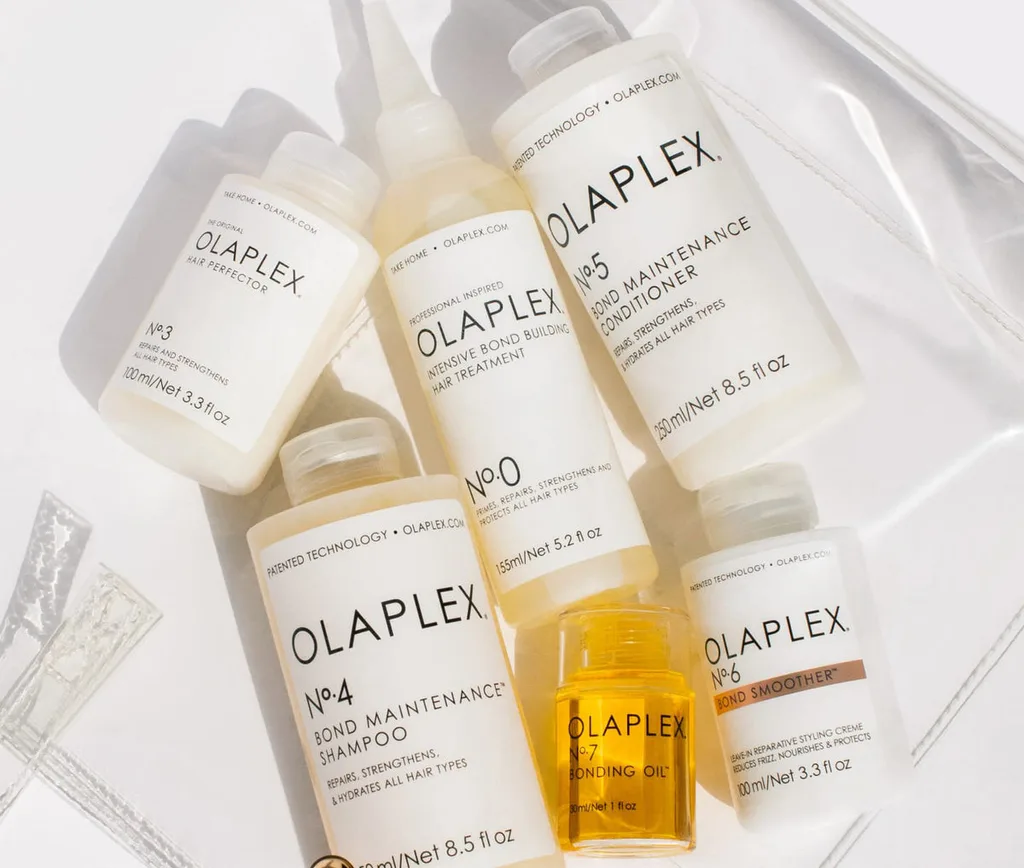The beauty world is in a seemingly unstoppable tailspin after news broke that Olaplex had been using an ingredient that could potentially link to fertility issues. Social media has been abuzz over the past few days with word spreading that Olaxplex was allegedly set to be banned in the UK and Europe due to safety concerns over the Olaplex No. 3 Hair Perfector — a treatment used to rehabilitate dry, damaged strands post-colouring.
First of all: no, Olaplex No. 3 is not set to be banned. There is, however, a European Union-wide ban on an ingredient previously found in the Olaplex formula, with the United Kingdon expected to follow suit. (Questions to the Therapeutic Goods Administration (TGA) and the Australian Industrial Chemicals Introduction Scheme (AICIS) went unanswered.)
That ingredient is butylphenyl methylpropional, also known as lilial. It can also appear on certain labels as butylphenyl methylpropional (p-BMHCA), 2-(4-tert-butylbenzyl) propionaldehyde, lysmeral, and lily aldehyde.
Two years ago, the European Commission classified lilial as “reprotoxic”, finding that it has the potential to negatively impact fertility. It can also harm unborn children.
This week, a TikTok video claiming all Olaplex products would be banned in Europe went viral, with more than a million views at the time of publication. It’s yet another example of misinformation spreading like wildfire in the digital age.
Here, marie claire unpacks what happened, the latest with lilial, and whether you need to inspect your Olaplex products at home.

What is lilial, and why is it harmful?
Lilial is a synthetic scent ingredient which mimics the fragrance of lily of the valley and is designed to give products a sweet, floral smell. It is used in a variety of beauty products from moisturisers and skincare to perfumes and haircare. That being said, its uses aren’t limited to the cosmetics world, with the ingredient also being used in some laundry detergents and household cleaners.
Under the EWG Cosmetics Database, the product is listed as having developmental/reproductive toxicity, namely suspected damage to fertility or an unborn child. It is used in a variety of beauty products from moisturisers and skincare to perfumes and haircare.
Over the past few years, The European Commission Scientific Committee on Consumer Safety has been monitoring lilia for potential risks. In 2019, the Committee published a paper which concluded that “the aggregate exposure, arising from the use of different product types [with the ingredient] together, [it] cannot be considered as safe.”
In 2020, the European Commission classified lilial as “reprotoxic”, meaning that it has the potential to cause risk to fertility and unborn fetuses. In September 2020, the EU regulatory authority announced their intent to [have] lilial phased out by March 2022.
Speaking to the Independent, a cosmetics expert argued that while the revelation is concerning, lilial is usually present in formulations at a concentration of 0.1 per cent or less and “is not enough to directly impact fertility”. They then added that it is fairly easy for fragrance houses to reformulate existing products to remove lilial.
A 2019 paper also found that while traces of lilial are typically minimal in each product, a tendency to use several products which all use the ingredient could lead to a buildup, and potentially heighten adverse reactions, meaning it’s better to avoid it.
Has Olaplex been banned?
Despite the media frenzy, It’s important to note that Olaplex has not been banned. Many people are spreading misinformation online that the brand itself has been banned, which is simply untrue. The brand will continue to manufacture its products, but will be excluding lilial from here on out.
Speaking to the Independent, the brand clarified that any Olaplex products containing lilial had not been sold in the UK since January 2022. In the same statement, a spokesperson for Olaplex clarified that lilial was not an active or functional ingredient and was only used in small amounts for fragrance purposes. As of January 2022, Olaplex no longer sold or distributed products using Lillial in the UK or EU.
Olaplex did not respond to questions from marie claire Australia in time for publication as to distribution plans in Australia.
After hairdresser Tom Smith made a video on the topic, Olaplex also commented on Instagram: “To confirm, OLAPLEX N°.3 Hair Perfector is not banned in the UK. Olaplex takes the health of our consumers and regulatory compliance seriously. We no longer formulate with this ingredient. Since January 2022, Olaplex has not sold any products containing lilial in the EU or UK.”
What does this mean for Olaplex in Australia?
If you have Olaplex products at home, check the label to see if you have an old or new version of the product where lilial isn’t listed (and if you’re still unsure, you can go to the Olaplex customer service team directly).
The saga is yet another painful lesson of the power of misinformation in the digital age. A TikTok video which claimed that all Olaplex products would be banned in Europe has received over a million views (and counting), unsurprisingly, has caused people to panic even further. While news travels fast, consumers should be doing their own research both prior and post purchase to better understand what it is they’re using and it’s potential side effects. Understandably, making sense of ingredient labels isn’t always the easiest thing to do, so if you are having concerns over the products you’re using, you can always consult a registered dermatologist to find a range of products that works in your best interests.
The beauty industry is always changing, and brands, in turn, are always adapting to keep up with it. Ingredients are being added and removed all the time, and this Olaplex ordeal has been a timely reminder to never use a product blindly.
While we continue to push for more transparency and regulation within the industry, it isn’t a change that’s going to come overnight, but when brands are held to account on a global level, it causes others to sit up and take note as well. Haircare lovers can rest easy knowing that Olaplex isn’t going anywhere anytime soon, but we can only hope that the ripple-on effects from the issue will serve as a warning shot to the industry at large, and all those who play in it.










